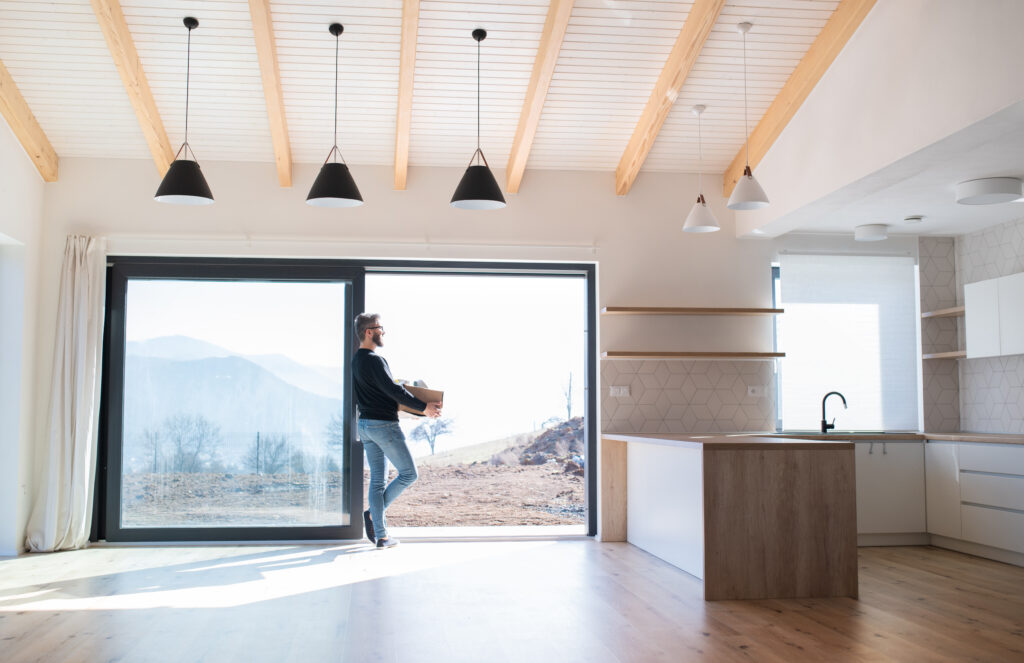When it comes to flat rooflights, understanding the importance of proper maintenance, repair, and replacement is crucial for the safety and functionality of your property. Damaged or deteriorating rooflights can lead to water leaks, structural damage, and energy inefficiency, posing serious risks to your building and its occupants. In this blog post, we will explore the key factors you should be aware of when it comes to repairing and replacing flat rooflights. From identifying common issues to the benefits of upgrading to newer, more energy-efficient models, we will equip you with the knowledge needed to make informed decisions and ensure the longevity and performance of your rooflights.
Key Takeaways:
- Regular Maintenance is Key: Consistent upkeep can prevent major issues and extend the lifespan of flat rooflights.
- Consider Repair Options: Small damages can often be repaired by professionals, saving you the cost of a full replacement.
- Replacement Criteria: When damage is extensive, opting for a new flat rooflight with improved features could be the best long-term solution.

Understanding Flat Rooflights
Before delving into repairing and replacing flat rooflights, it is crucial to have a good understanding of these rooflights. Flat rooflights are popular choices for modern homes and commercial buildings due to their sleek design and ability to bring in natural light. They are typically installed on flat or low-pitched roofs to provide illumination to the interiors.
Types of Flat Rooflights
When it comes to flat rooflights, there are several types to choose from, each offering unique features and benefits. Fixed rooflights are popular for their simplicity and cost-effectiveness, while opening rooflights can provide ventilation and access to the roof space. Walk-on rooflights are designed to bear weight, allowing them to be installed in areas where foot traffic is expected.
- Fixed rooflights: Simple and cost-effective
- Opening rooflights: Provide ventilation and access
- Walk-on rooflights: Designed to bear weight
- Circular rooflights: Offer a unique design
- Pyramid rooflights: Add architectural interest
Understanding the different types of flat rooflights will help you choose the one that best suits your needs. After selecting the type, consider factors like size, glazing options, and insulation properties to ensure optimal performance.
Common Issues and Lifespan
Like any other building component, flat rooflights are prone to certain issues over time. Common problems include leaks, condensation, and damage to the frame or glazing. Regular maintenance and inspections can help identify these issues early and prevent further damage. Flat rooflights typically have a lifespan of 10 to 20 years, depending on the quality of materials used and maintenance practices. After this period, it is advisable to consider replacing the rooflights to maintain the integrity of the building.
Efficient drainage systems, proper installation, and regular cleaning can significantly extend the lifespan of flat rooflights, ensuring they continue to provide natural light and aesthetic appeal to the property.
Assessment and Preparation
Assessing Rooflight Condition
Before initiateing on any repairs or replacements to flat rooflights, it is crucial to assess their current condition. Start by visually inspecting the rooflights for any signs of damage such as cracks, leaks, or discolouration. Look out for any gaps between the rooflight and the frame, as these can lead to water ingress and further deterioration.
It is important to check the seals around the rooflights thoroughly, as damaged seals are a common cause of leaks. Consider the age of the rooflights and their exposure to harsh weather conditions, as these factors can contribute to their deterioration. If you notice any significant damage or wear and tear, it may be time to consider repairing or replacing the rooflights to avoid further issues.
Preparing for Repair or Replacement
Once you have assessed the condition of the flat rooflights and identified the areas that require attention, it is essential to prepare for the repair or replacement process. Clear the surrounding area of any debris or obstructions to allow easy access to the rooflights. Gather all the necessary tools and materials needed for the job, such as replacement seals, silicone sealant, and any other relevant equipment.
Before beginning any repair work, make sure to measure the dimensions of the rooflights accurately to ensure that you purchase the correct size replacements. Additionally, consider enlisting the help of a professional if you are unsure about how to proceed with the repair or replacement process, as improper installation can lead to further damage and issues in the future.
Repairing Flat Rooflights
When it comes to flat rooflights, they may occasionally require repairs due to wear and tear or damage. In this chapter, we will guide you through the process of repairing flat rooflights to ensure they continue to provide natural light and ventilation for your space.
Step-by-Step Repair Process
Below is a detailed breakdown of the step-by-step process for repairing flat rooflights:
| Step 1: | Assess the damage to determine the extent of repairs needed. |
| Step 2: | Clean the area around the damaged section to prepare for repair work. |
Tips and Tricks for Effective Repairs
For effective repairs of flat rooflights, consider the following tips and tricks:
| Tip 1: | Use high-quality materials for long-lasting repairs. |
| Tip 2: | Ensure proper sealing to prevent leaks and water damage. |
After completing the repairs, regular maintenance is essential to prolong the lifespan of your flat rooflights.
- Inspect the rooflights periodically to identify any potential issues.
- After making repairs, check for any signs of water ingress or condensation.

Replacing Flat Rooflights
Choosing the Right Replacement
When it comes to replacing flat rooflights, it is crucial to choose the right replacement to ensure a seamless fit and optimal performance. Consider the size, material, and design of the new rooflight to match the existing structure and meet your specific requirements. Look for high-quality materials that offer durability and longevity, such as toughened glass or polycarbonate.
Additionally, consult with a professional roofer or supplier to get expert advice on selecting the best replacement for your flat rooflight. They can help you navigate through the various options available in the market and recommend a product that suits your budget and style preferences.
The Replacement Procedure
Replacing flat rooflights involves a meticulous process to ensure a secure and weatherproof installation. Before starting the replacement, ensure that the surrounding area is clear and safe for work to commence. Remove the old rooflight carefully, taking precautions to avoid damage to the roof structure or surrounding elements.
Next, inspect the roof opening for any signs of damage or decay that may need attention before installing the new rooflight. Properly seal the new rooflight in place to prevent any leaks or draughts, ensuring a watertight finish that enhances the performance and energy efficiency of your property.
It is highly recommended to hire a professional roofer to carry out the replacement procedure to guarantee a reliable and long-lasting result. A skilled roofer will have the expertise and tools to complete the installation efficiently and effectively, ensuring your flat rooflight functions optimally for years to come.

Maintenance and Care
Regular maintenance and proper care are essential to ensure the longevity and performance of your flat rooflights. By following some key tips and guidelines, you can keep your rooflights in top condition, making sure they continue to provide optimal lighting and aesthetic appeal.
Routine Maintenance Tips
When it comes to routine maintenance of your flat rooflights, there are a few simple yet crucial steps to keep in mind. Firstly, regularly clean the glass or polycarbonate panels to remove any dirt or debris that might obstruct the light. Secondly, inspect the seals and gaskets for any signs of wear or damage, as these are vital in keeping your rooflights weatherproof and insulated.
- Regularly clean the glass or polycarbonate panels
- Inspect seals and gaskets for wear or damage
After performing these routine maintenance tasks, if you notice any issues or concerns, it’s crucial to address them promptly to avoid any further damage or complications down the line. Regular maintenance can help extend the lifespan of your rooflights and prevent costly repairs in the future.
Preventing Future Damage
Alongside regular maintenance, taking proactive steps to prevent future damage is key to ensuring the longevity of your flat rooflights. Implementing measures such as installing bird spikes or shutters can help prevent pests or debris from causing damage to your rooflights.
Additionally, consider trimming any overhanging tree branches that could potentially fall and damage the rooflights during adverse weather conditions. By taking these preventative measures, you can protect your rooflights from potential hazards and ensure they continue to function efficiently for years to come.
Repairing and Replacing Flat Rooflights – What You Should Know
When it comes to flat rooflights, understanding the importance of proper maintenance, repair, and replacement is crucial for ensuring the longevity and functionality of your rooflights. Regular inspections, prompt repairs of any damages, and timely replacements when necessary are key to preventing issues such as leaks, water damage, and energy loss. By staying informed about the condition of your flat rooflights and taking the necessary actions, you can maintain a safe and efficient roofing system for your property. Remember that seeking professional advice and assistance when dealing with rooflight repairs or replacements is always recommended for a successful outcome.
FAQ
Q: What are the common issues that may require repairing or replacing flat rooflights?
A: Common issues that may require repairing or replacing flat rooflights include leaks, cracks, degraded seals, or damage to the glass or frame.
Q: How can I determine if my flat rooflight needs repairing or replacing?
A: You can determine if your flat rooflight needs repairing or replacing by conducting a visual inspection for any signs of damage, such as water stains, mould growth, cracks, or condensation between panes.
Q: What are the key considerations when choosing between repairing and replacing flat rooflights?
A: Key considerations when choosing between repairing and replacing flat rooflights include the extent of damage, cost of repairs versus replacement, energy efficiency improvements, and the overall condition and age of the rooflight.






